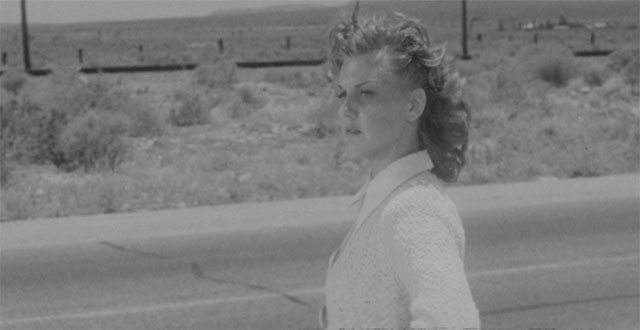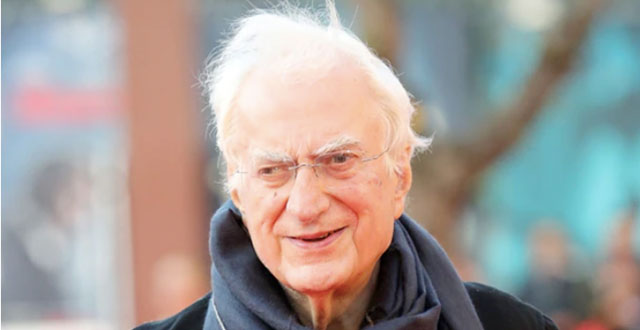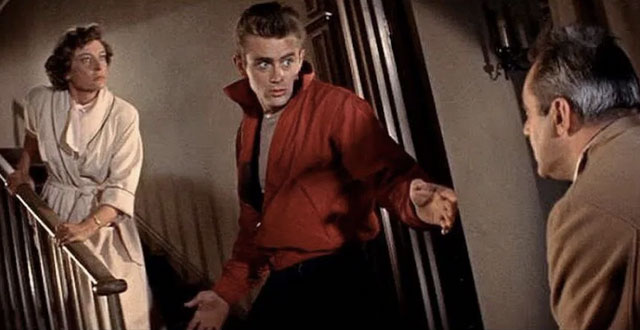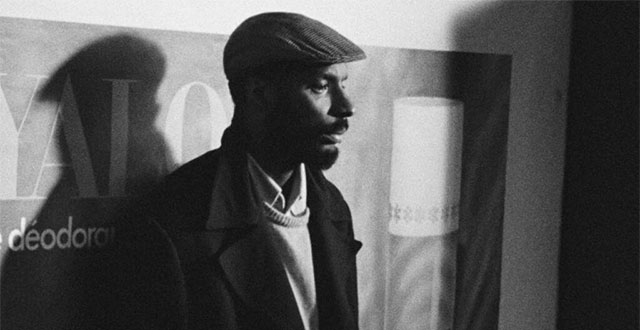News
NOTES ON FILM & RESTORATION
Anyone who loves the cinema is now used to terms like “restoration,” “preservation,” “4K scan,” and so on, and familiar with before-and-after demonstrations included as extras on Blu-rays. The Academy Film Archive’s restoration of Detour has been covered in detail, and there’s an excellent 11-minute extra about the work that was created for the Criterion release and that is also available on their channel. I thought it would be worthwhile to look at some of the fine points of that undertaking and how it illustrates the technological advances that keep altering the very nature of film restoration. I called Mike Pogorzelski from the Academy to talk me through it and he was more than happy to oblige.
Let’s start with the term restoration, which, Mike feels, started losing a lot of its relevance when marketing divisions co-opted it many years back. “It’s more accurate to say re-formatting for the 21st century,” Mike explained. He used the 2014 restoration of Hoop Dreams as a literal case in point. When that film was released theatrically in 1994, Steve James and his collaborators grudgingly accepted the fact that the image, shot primarily on Beta SP, would have to be cropped and transferred to film, thus losing a sizable percentage of visual information. Now the film has a clarity that simply wasn’t possible in 1994. The same is true of films shot on super-16 or super-35, all a generation away from their camera negatives. For that matter, it’s true of many other films that we all know and love. “Audiences would never have seen what we’re now able to see with optimal elements,” he explained, “because the release prints were often made from dupe negatives a generation or two away from the original.” Mike pointed to prints struck in the 80s, made from CRIs (color reversal intermediates) fed into high-speed printers, as particularly egregious examples.
In the case of Detour, the search for usable elements had gone on for years, and Mike’s esteemed colleague Heather Linville had scoured the world’s archives looking for usable elements. The missing ingredient turned up in 2017 at the Cinémathèque Royale de Belgique, a 35mm nitrate print that had been struck from the camera negative. It was hiding in plain sight, because it would have been deemed unusable as recently as 2011: there were both French and Flemish subtitles burned into the image. What had changed? Mike invoked Moore’s Law, offered by Gordon Moore, the co-founder of Intel: in 1965, he predicted a yearly doubling in the number of components in an integrated circuit over the next decade, and in 1975 he predicted that the number would continue to double every two years. This “model,” for lack of a better word, has been crucial in the field of digital electronics, and thus in film restoration (yes, we’ll keep using the term). What was slow and cumbersome in 1996, when Frank Capra’s silent The Matinee Idol became the first restoration that was made possible only due to digital technology. “Michael Friend and Grover Crisp used digital scans here and there in the 90s, but it was all very slow,” said Mike. “It only really became practical in the early 2010s.” By 2012, Mike added, the drivers had gotten so much faster and processors could move so much more data in so much less time that it became far easier to remove subtitles, which previously had to be hand-painted out one frame at a time. “We asked Nicola Mazzanti [from the Cinémathèque Royale] to send us a test scan with the thought of grabbing a shot here and there. We had a dupe neg from MoMA to composite the frames where the subtitles appeared, but whenever there was camera movement or constant movement in the frame such as rain, it looked like artifacting. In those areas we did have to do hand-painting. But the majority of the time we were able to do the compositing.” The result, as so many of us can’t stop saying, is astonishing.
To be continued…
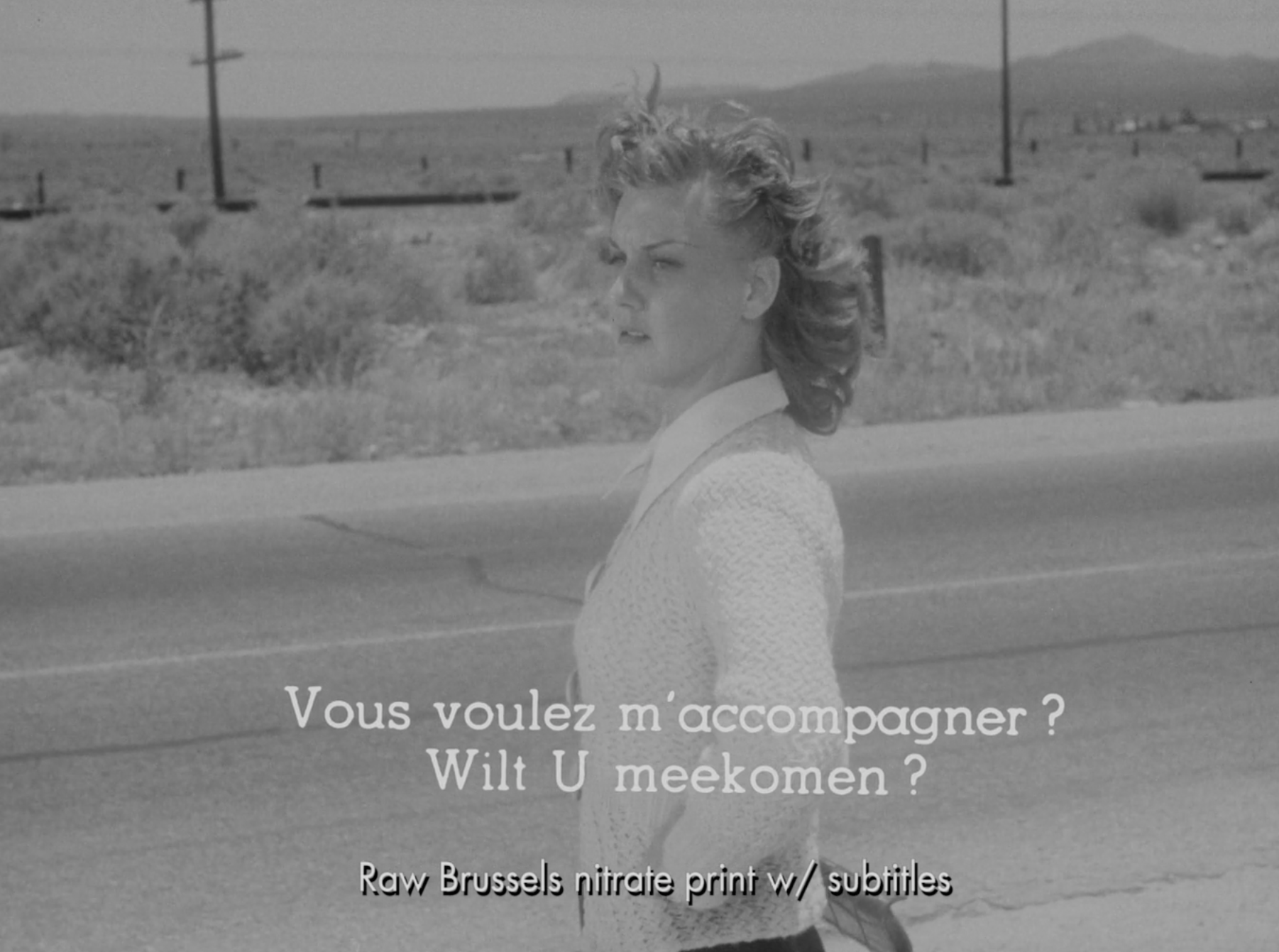
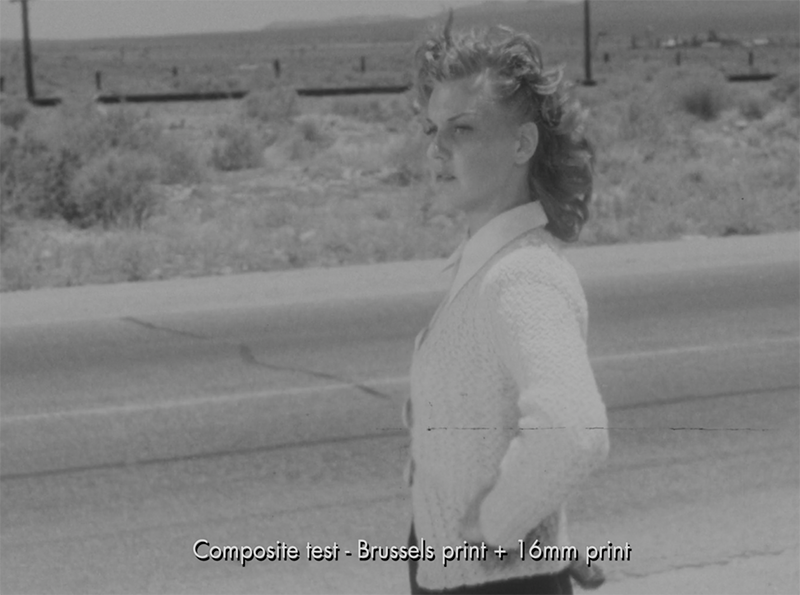

- Kent Jones
Follow us on Instagram, and Twitter!
DETOUR (1945, d. Edgar G. Ulmer)
Restored by the Academy Film Archive and The Film Foundation in collaboration with Cinémathèque Royale de Belgique, The Museum of Modern Art, and the Cinémathèque Française. Restoration funding provided by the Hobson/Lucas Family Foundation.
BERTRAND TAVERNIER, 1941-2021
It’s going to be difficult for me to start talking about Bertrand Tavernier in the past tense.
Bertrand loved to talk. He loved to talk about movies, about history, about music, about literature, about food, about wine. When he told a story in his trembling musical baritone, he would get to the punchline, gauge your laughter, and then repeat said punchline with a mischievous smile to encourage more laughter, spurring you on with exclamations of “Eet’s eencredible, non? Eh?” I remember visiting him in the room where he was cutting My Journey Through French Cinema. He showed me a few different segments, including his moving tribute to Jean-Pierre Melville. Bertrand was bracingly honest about shortcomings in the work of his favorite filmmakers. That included Melville’s own “disputable performance” in his Deux Hommes dans Manhattan, not to mention Bertrand’s “delirious” rave for the film in a magazine called L’Étrave. There is a clip of Melville questioning a woman in a hospital bed, and asking her in English: “Where did he die? Tell me – where did he die?” After the sequence had finished, Bertrand started chuckling and repeating Melville’s godawful line reading “‘Whayre deedhe dyee?’ Eencredible, non? Eh?”
In the 90s, most of the younger French filmmakers I knew were dismayed that I had any sympathy for Bertrand’s work. When I mentioned to one director I knew that I was a fan of his police/gangster film L627, it was as if I’d said that apart from the genocide Hitler wasn’t really that bad. “Well,” my friend murmured darkly, “I suppose if you didn’t live in this country you could feel differently about it…” Bertrand stuck up for all the French films of the past that my friends ignored, seeing interesting passages and grace notes in the work of directors who had long ago been ripped to shreds by Truffaut, Godard, and the rest of the critics at Cahiers du Cinéma. He pissed off a lot of people when he told an unflattering but absolutely believable story about Truffaut-as-young-critic-on-the-make in a documentary by Antoine de Baecque and Serge Toubiana, and he pissed off many more with a letter he ghost-wrote, signed by multiple filmmakers, insisting that French critics took too much pleasure in attacking and destroying too many of their country’s own movies. The positions made people uncomfortable and upset a lot of orthodoxies, but they were honestly held.
As for his films, Bertrand operated on a different wavelength from almost everyone around him. I remember the spell cast by ‘Round Midnight, in which he was able to pay tribute to his second great love, jazz, by means of his first, cinema. Dexter Gordon’s music-making was a little off in that film, but his presence was magic every second he was onscreen. I loved his post-WWI drama Life and Nothing but… a lyrical, vivifying film about the search for the Unknown Soldier as the country was slowly coming back to life. And in the early 2000s Bertrand made my favorite of his films, Safe Conduct, based on the experiences of Jean-Devaivre, Jean Aurenche and others he had come to know who had worked in the movie industry throughout the occupation. There was a reverent awe in the presence of the past in those movies that I found deeply moving in and of itself.
Right now, I’m looking at my shelf of DVDs and Blu-rays, at titles by Henry Hathaway and Delmer Daves. I came to appreciate both of them thanks to Bertrand and Bertrand alone (he writes passionately about both in his two-volume dictionary of American directors co-written with Jean-Pierre Coursodon, and his interviews with both men appear in his collection Amis Américains). I programmed a small selection of Hathaway films the year we showed My Journey Through French Cinema in the New York Film Festival as a tribute to Bertrand, and I’m happy that I did. He alerted his friends to every new DVD or Blu-ray release of forgotten films that he considered to have passages of merit or that occupied interesting places in the landscape of cinema, and he was always advocating for the restoration of multiple titles. He was the one who alerted The Film Foundation to the fact that there were elements for The Chase, which I wrote about a few weeks back, held in a European archive. He was also on the advisory board of the World Cinema Project and recommended one of his old friend André de Toth’s Hungarian films, Two Girls on the Street, which was subsequently restored.
Bertrand and I would see each other every time I visited Paris and every time he came to New York, sometimes on our own and sometimes with his wife Sarah. His health was always questionable in the last years, as he was beset by one illness after another, but his curiosity was boundless and his focus and intelligence were unflagging. He was a great talker—a world championship talker, I guess you might say—but it was never an oration. It was always a conversation, because it was based on a shared love for the cinema. I relished every minute of it.
I wish I could have seen Bertrand just one more time, to talk and laugh and discover and disagree and talk some more. And I want to tell everyone who might be reading this that whether you know it or not, this loss is immense. One more gone, who remembered.
NOTES ON FILM & RESTORATION
A few days ago, a Tweet appeared claiming that Pepe LePew, a character from the late 40s intended to be a parody of a continental seducer (and widely understood as such when I was a kid), contributed to rape culture…which was reported in the press…which was followed by the removal of an entire scene with Pepe LePew from a forthcoming film…which prompted claims from the studio that their decision had nothing to do with the Tweet and that they were planning on doing it anyway.
This crazy series of events got me thinking about a tendency that came into being a long time ago and that has expanded and broadened over the years and become a standard way of understanding ourselves within what we call the culture. That is: the tendency to see all human beings as either sponges or receptacles or combinations thereof, open to receive every ideology delivered in disguised form by means of this or that movie or song or book or cultural product. It is now regularly spouted as a truism by television commentators and podcast hosts, pop stars and journalists, politicians of every stripe and late night emcees, academics and authors, and—based on personal observation—average citizens in Park Slope, Brooklyn.
Right now, there’s an obsessive amount of energy directed at images in popular culture, and in older movies in particular. As targets, old movies strike me as the very lowest of low-hanging fruit, particularly when you isolate certain characters or incidents, freeze them in place and out of time, and strip them of nuance, irony and context. Or, as the director of Punisher: War Zone did in yet another Tweet, dismiss all older films out of hand because they “rarely hold up” and are “racist and sexist AF.” As Charlie Brown would say, *sigh*.
It certainly gets a lot of attention to point an accusing finger at Pepe LePew, but wouldn’t that energy be better spent keeping the public focused on the horribly high volume of sexual harassment complaints filed by women in the fast-food industry, or by hotel and motel housekeepers? And if we’re just talking about images, surely the commercial and fashion industries deserve more attention than they’ve gotten.
Do the majority of people, particularly those of us who know and love cinema and its history, really take all old movies literally and uncritically, and swallow their conventions whole? Hardly. One can love a film enough to see it in all its dimensions, and that includes reflections of the culture as it was and no longer is. I love My Darling Clementine, but I wouldn’t dream of making a film exactly like it and I don’t know anyone else who would. There are countless visual and behavioral grace notes in that film, embedded within an idea of the country as it once officially interpreted and chose to picture itself and no longer does. Rebel without a Cause is close to my heart, not despite the pathologically caricatured parents but because of them: those crude character conceptions cater so shamelessly to certain attitudes of the time that they have become historical artifacts, and they have the paradoxical effect of setting off the many beauties of the film to even greater effect. Shadows is a great American film, but I don’t know any modern filmmaker who would follow John Cassavetes’ lead in casting an Italian-American actress as a light-skinned African-American character—in fact, Cassavetes himself probably wouldn’t, either. And that’s not to slight Leila Goldoni’s performance in the film, which is stunning.
From a practical point of view, as any parent can tell you, the most expedient way to direct attention to something is to hide, banish, or forbid it. You can bet that as we speak, Pepe LePew cartoons are being viewed all across the country.
Outside of outright cultural genocide, all efforts to edit or efface the past are ultimately doomed to failure. The best thing we can do is to learn from the past, and to constantly look more and more closely at it, without sentimentality, and see it more and more fully.
Which is one of the reasons that film preservation is so vitally and crucially important. Actually, make that: essential.
- Kent Jones
Follow us on Instagram, and Twitter!
MY DARLING CLEMENTINE (1946, d. John Ford)
Preserved by UCLA Film and Television Archive and the Museum of Modern Art in cooperation with 20th Century Fox. Funding provided by American Movie Classics and the Film Foundation.
REBEL WITHOUT A CAUSE (1955, d. Nicholas Ray)
Restored by Warner Bros. in collaboration with The Film Foundation. Restoration funding provided by Warner Bros, Gucci, and The Film Foundation
SHADOWS (1959, d. John Cassavetes)
Restored by UCLA Film & Television Archive in cooperation with Faces Distribution Corporation with funding provided by The Ahmanson Foundation, The Film Foundation and the Hollywood Foreign Press Association.
SOLEIL O FINDS THE LIGHT OF DAY
Kirk Michael
“Soleil Ô,” one of the many lost or nearly lost films that Martin Scorsese has helped pull from obscurity as part of the World Cinema Project, reveals Mauritian writer/director Med Hondo as furiously political but also furiously creative. Originally released in 1967, explanatory text confides that the film was found, “in the audiovisual archives of the Paris chapter of the Communist Party.”
And the story itself is as wild as its rediscovery, with no strict narrative progression but many arresting scenes. Take an early sequence where a group of African migrants are baptized into the Christian faith and piously carry wooden crosses around the churchyard… only to break into military formation, flip the crosses the other way, and use them to practice sword fighting.
It’s hard to know the names of individual characters (no one is properly introduced) but for the most part we tag along with our unnamed African protagonist (Robert Liensol) as he searches for work and lodging in a hostile Paris. Our man is a trained accountant but he never gets the chance to interview for any jobs listed in the newspaper. He recurringly meets a Black street sweeper, whose wry smile shows how far we are from the French promise of liberté, égalité, fraternité. The larger group of fellow migrants serves as a sort of chorus, joining our hero whether he finds himself in a cathedral or cramped apartment for a meeting of communist revolutionaries.
Hondo himself does the voiceover narration and it’s filled with aphorisms like, “I am bleached by your culture but I remain a negro.” He made the film in a period when African immigration to France was ramping up, with some 300,000 migrants entering the country each year. In a series of coy interview-style scenes we see White women muttering, “There are too many already,” before suggesting the government might have to “herd them like American Indians.” They also giggle over base assumptions about the sexual prowess of Black men and Hondo displays his brutal humor when he overlays a meeting of our hero and a White woman with a soundtrack of barnyard noises. Later, a White barfly says, “I love negro spirituals” in the same way that Bradley Whitford’s liberal dad said in “Get Out,” “I would have voted for Obama for a third term if I could.”
Hondo’s cinematographic choices also fascinate — even some seemingly simple two-shots of dialogue are complicated by many pans and zooms, with the camera archly landing in uncomfortable closeup as an interlocutor insists only the “most useful” migrants should come to France. Sometimes we get improvised, neorealistic shots of neighborhood life interspersed with a pastiche of ecstatic fantasias, as when a Black man playing a soldier dies only to be resurrected by a single franc note.
While “Soleil Ô” can sometimes bewilder, you’re pulled along by its scruffy charm. After a truly audacious ending, a title card promises “To be continued.” Unfortunately, there’s no sequel available to watch, although the brutal legacy of European colonialism is ongoing.
“Soleil Ô” is streaming on the Criterion Channel. Not rated. Running time 1:48.
Visit www.criterionchannel.com
